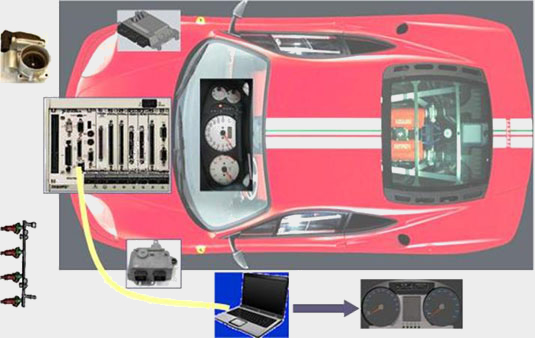
The virtual vehicle system can be understood as a hardware-in-the-loop (HIL) system composed of several controllers. After a single controller completes the automatic test, it needs to be sent to the vehicle manufacturer for testing in the electrical and electronic system. At this time, a virtual vehicle system is needed.
The virtual vehicle system is to simulate all the sensors and actuators on the car through the model (including engine model, gearbox model, vehicle dynamics model and network model, etc.) according to a certain algorithm to interact with each controller in the system to detect the whole The reaction of the car's electronic and electrical system in the normal working environment.
The virtual vehicle system can also artificially perform fault injection (including any pin short-circuit to ground, short-circuit to the power supply, open circuit, short-circuit between any two or several pins, and changing the electrical characteristics of sensors and actuators, etc.) to detect The reaction of the electronic and electrical system of the whole vehicle under abnormal working environment.
The virtual vehicle system will automatically generate test reports based on the test results of the vehicle's electrical and electronic systems in normal and abnormal environments, providing a reference for the improvement of the vehicle's electrical and electronic systems.
A real vehicle contains mechanical components such as engine gearboxes, as well as sensors and actuators.
In the virtual vehicle system, there is only the electronic and electrical system of the entire vehicle, and there are no longer mechanical parts, sensors and actuators. Sensors and actuators have been replaced by simulators.
Compared with the real car, the virtual vehicle system can flexibly change the sensor signal and the load characteristics of the actuator according to its own needs, so as to achieve the purpose of testing the electronic and electrical system of the whole vehicle.
Based on NI RT real-time system platform;
Support traditional fuel vehicles, hybrid vehicles and pure electric new energy vehicles
Dynamic system simulation;
Power system module;
Support SENT protocol sensor;
Support engine multiple injection collection;
Custom test interface;


